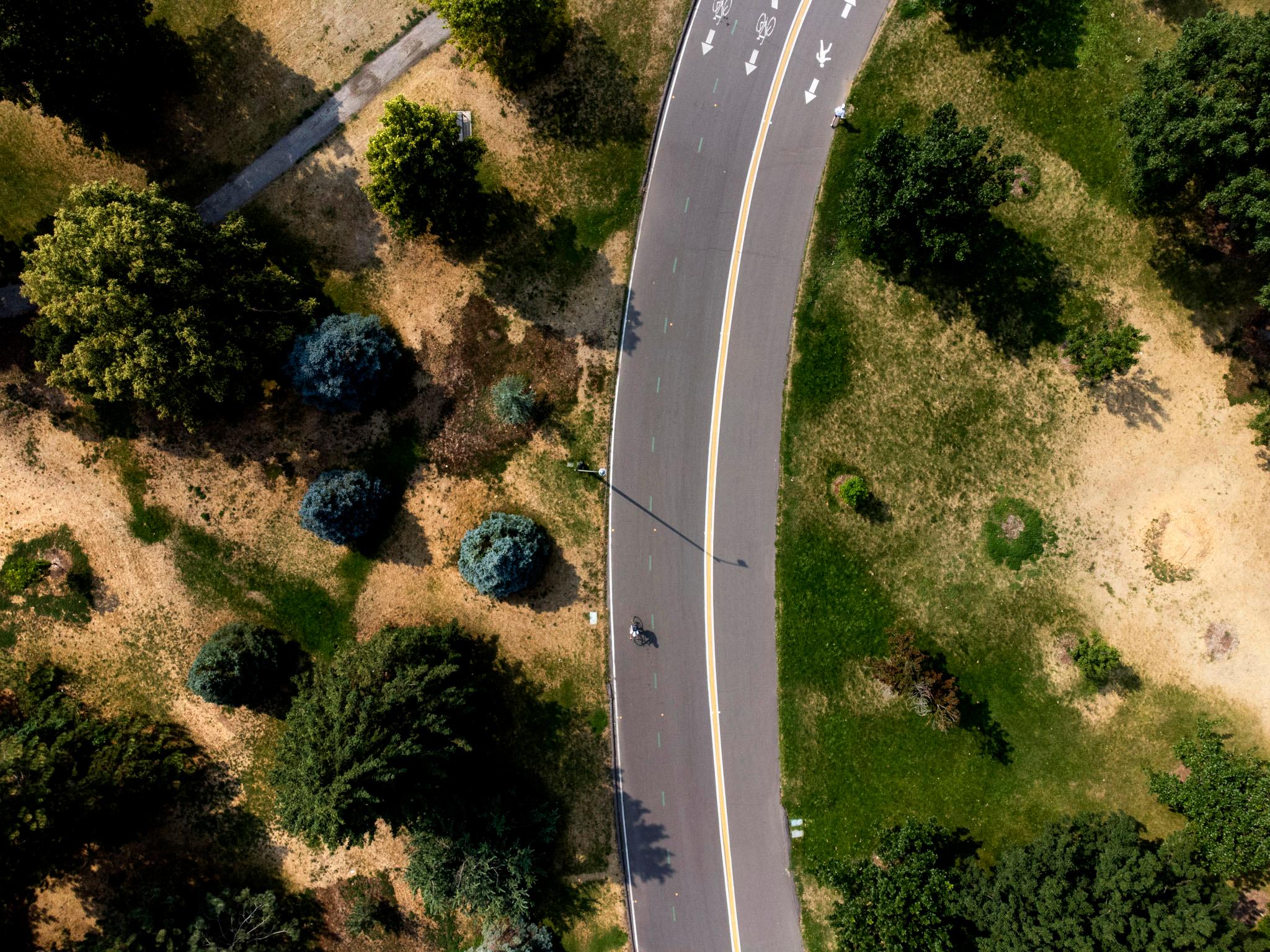Denver Parks and Recreation has a problem: not all the walkers and runners at Sloan's Lake Park like to use the concrete paths that twist around the lake. Denver Parks and Recreation also has a bigger problem: there are about to be a lot more people using that park as new, dense development projects finish up between the park and West Colfax Avenue.
To accommodate newcomers and protect trees from runners who don't like hard-paved paths, Denver's park department said they're about to add a circuit of "soft surface trails" around the lake. With the help of a consultant, they first studied how the park is actually being used, in order to create infrastructure that will actually be useful. And, in an unusual deal, the updates will be funded by EnviroFinance Group, the developers behind one of the new, denser housing projects on the old St. Anthony's hospital site.
"The redevelopment of St. Anthony's obviously brought a lot of attention to that park," said Gordon Robertson, Denver Parks and Recreation's director of park planning. "It represented clearly a need for us to make sure we were providing the right amenities."
So Robertson and his team deployed a survey to the surrounding neighborhoods to see how people use the park. Of 840 responses, the most common use was, by far, walking and running. And it wasn't just data that let them know that improvements were needed to accommodate foot traffic. Social trails, or dirt trails that park users make and remake by walking in the same places over and over, can be seen all around the lake.
"The intention of the project was to place the soft surface trail where people are already walking," said Jennifer Olson, a landscape planner who works for Robertson. Running and walking off-trail could spell disaster -- or at least slow degradation -- for the park's trees. Trees and tree health, she said, are very important to the parks department.
Those things are also very important to longtime neighbors around the lake, who invited Robertson and Olson to their monthly citizens' group meeting. Robertson assured the group that no trees would be taken out for the new trails.
Most of these social trails follow existing hard-paved pathways. Olson said runners, who use the park most, don't like to run on concrete, so the soft trail will allow them to avoid shin splints and wrecking tree roots.

Right now, Denver "is one of the few cities" in the U.S. that doesn't tax new development to fund new parks, Olson said.
As part of the agreement with EnviroFinance Group to fund the changes, she said, construction on the soft path needs to begin by the end of 2018. They'll begin taking construction bids soon. The group has agreed to contribute $123,000.
This is a deal Denver Parks and Rec was lucky to have," Olson said. "It’s fairly uncommon."
Cameron Bertron, an executive vice president with EnviroFinance Group, said the size of the project meant his company was working with all kinds of stakeholders to get through the planning process.
"We recognize that big developments have lasting impacts in neighborhoods," he said. Making sure the project helped the city and neighborhood accomplish its goals is "just part of the ethos of the company."

But surges of people into Denver's neighborhoods have made it necessary to revamp park space all over the city, and not all developers might want to play ball.
"New developments bring added impacts to our parks," said Kathleen LéVeque, assistant director of parks planning for the city. "It does create more wear and tear and more stress."
The city does have one tool to work on this issue, something called a General Development Plan (or GDP) that is supposed to require developers on larger land tracts to set aside 10 percent of space for parks. But most developments don't fall under that designation, LéVeque said. Instead, a working group consisting of city planners and developers are working to revise that process and set more money aside for parks when new development projects get started.
All this is part of living up to Denver's "Game Plan for a Healthy City." Denver Parks and Rec and Denveright released the first draft earlier this month for public review. The initiative's executive summary says parks growth has been outpaced by development; to reckon with poor health outcomes like rising obesity, the plan aims to foster park growth so every resident lives within a 10-minute walk of green space. Refining the GDP process, LéVeque said, could be a big piece of that.
"One thing that we’re considering is a cash-in-lieu option," she said, which could allow developers who are building near existing parks to contribute cash for park maintenance or updates. It could be a formalized version of the process that funded soft trails around Sloan's Lake.

Berton said he hopes any required development fees for parks in the future are transparent. As a developer and, he imagines, if he were a neighbor, he'd want to know that his money was going right into the community that's affected by development. He said he could see a future where fees just disappear into a city fund.
"It feels to me like the investment should be connected to the neighborhood," he said.
LéVeque said changes to the GDP process will be hashed out this fall, and will likely be brought to City Council for a vote near the end of the year.
Correction: the captions in this story originally incorrectly labeled the "Sloan's Lake Neighborhood Association" as the "Sloan's Lake Citizen's Group"












